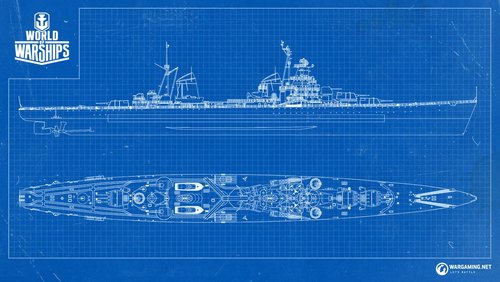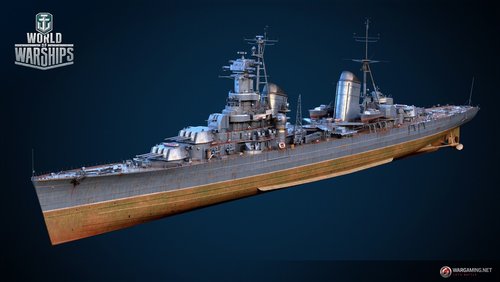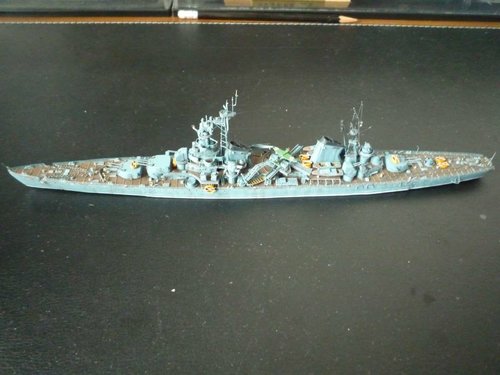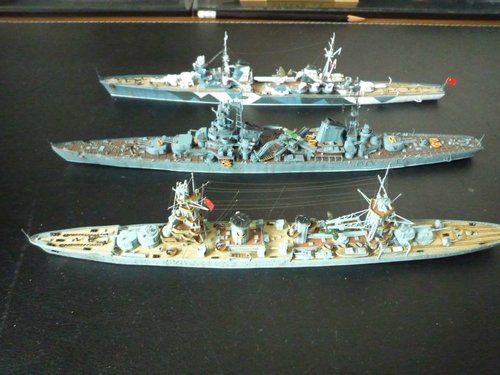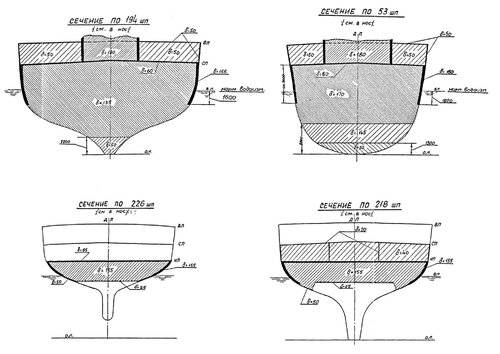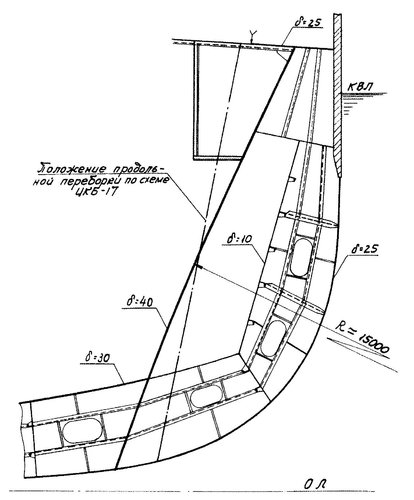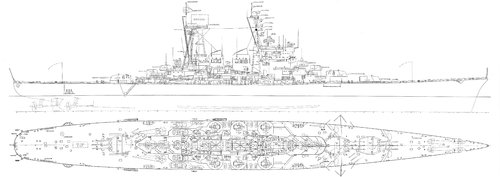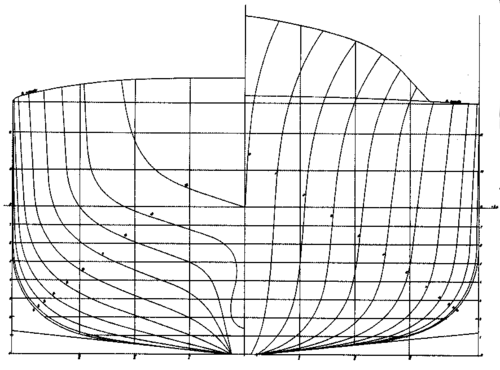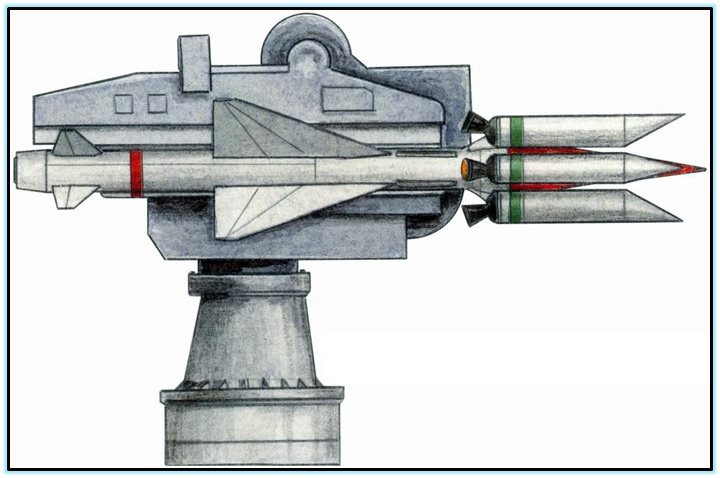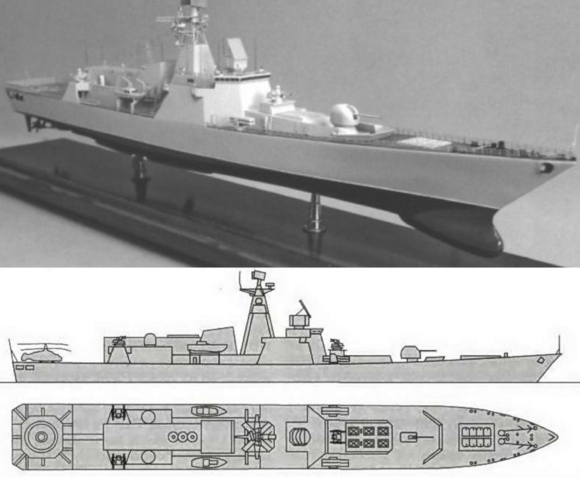You are using an out of date browser. It may not display this or other websites correctly.
You should upgrade or use an alternative browser.
You should upgrade or use an alternative browser.
Soviet Cruiser Projects
- Thread starter Angel
- Start date
- Joined
- 3 January 2006
- Messages
- 1,222
- Reaction score
- 932
Angel said:Hi, somebody have information about this ship.
Proyect 11990 test ship and Proyect 13040 Anchor.
will be escort of nuclear power carrier.
This is from the Never Were Warships forum - the original scanned source is unknown to me.
In any event, the pseudo-Aegis proposal was brought up again in the mid to late 90s and perhaps some of the techology was applied to China's current Type 052C - although some claim that China directly copied the SPY-1 Aegis through espionage?
Attachments
TinWing said:Angel said:Hi, somebody have information about this ship.
Proyect 11990 test ship and Proyect 13040 Anchor.
will be escort of nuclear power carrier.
This is from the Never Were Warships forum - the original scanned source is unknown to me.
In any event, the pseudo-Aegis proposal was brought up again in the mid to late 90s and perhaps some of the techology was applied to China's current Type 052C - although some claim that China directly copied the SPY-1 Aegis through espionage?
Unlikely (no SPG-62 equivalent to be seen on that ship).
Picture labeled 11990 is Anchar DDGN, version with combined nuclear and gas turbine powertrain. Project 13040 has no relation to Anchar, it's a different project of Soviet experimental ship of modular design. Official soviet name is OUK - evaluation and training ship. The drawing looks like a crude side view of Anchar CONAG version.
Sentinel Chicken
American 71 Heavy, contact departure 126.47
Do you have a link to that forum?TinWing said:This is from the Never Were Warships forum - the original scanned source is unknown to me.
- Joined
- 3 January 2006
- Messages
- 1,222
- Reaction score
- 932
- Joined
- 6 September 2006
- Messages
- 4,829
- Reaction score
- 9,422
Here are some of the bigger cruiser projects the Soviets undertook during the 1960s. This began as a topic over at Warship Discussion 3.0. Me and Michael Rozon discussed these ships and this is the product of his research and educated guesses given the limited info available. I've added some of my own comments too and I hope this gets someone interested to perhaps find out more.
Project 1126
Project 1126 was intended to be an anti-aircraft escort cruiser for the Moskva Class with some surface-to-surface capability. The project ran through 1960-1961 in TSKB-17 with P. P. Milonov as head constructor. The ship was to be around 10,000 tons displacement, speed between 33 and 34 knots and a range of approximately 3500 miles at 24 knots. Twenty variants were examined during this period. They ranged in size from 6,200 tons up to 11,000 tons and speeds from 29.7 knots up to 35.5 knots. Steam turbine, Nuclear, gas turbines, Diesel and combined steam-and-gas turbines were investigated as propulsion arrangements.
The final choice is reflected below and was set down in July of 1960. This is the one reflected in the line drawing.
Dimensions: (Approx)
Length (oa) 196m
Maximum Beam 24.25m
Draught to Keel 5.36m
Displacement around 9000 tons
Power Plant: Probably two, but plausibly four, pressurised water nuclear reactors driving two 45,000 horsepower steam turbines driving two shafts.
Speed: estimated 32-33 knots
Armour: Probably none expect for some shielding around the reactor spaces.
Weapons:
Long-Range SAMs: Could have been either; 2 twin SM-68 or SM-69 twin launchers, 1 forward, 1 aft for the M-3 Naval SAM system firing the V-800 missile, with 10 missiles per launcher. The missile may have been command guided like the M-1 (SA-N-1) and M-2 (SA-N-2) with the ability to guide 2 or 3 missiles at the same target. The missile was sleek but with four disposable solid rocket boosters. Length was about 20m, range around 55km with a 195kg HE warhead. Guidance was to be provided by two “Fregat” missile fire control directors. Development for M-3 launcher and the V-800 missile was never completed.
Another version is 2 twin launchers for the M-31 Naval SAM firing a modified 2K11“Krug” (SA-4 Ganef) missile with ten rounds per launcher. This missile is a beam rider for mid-course control with semi-active radar homing in the terminal phase. One fire control radar could guide two missiles at the same target. These radars would be two modified Pat Hand missile fire control radars.
Medium-range SAMs: 2 twin launchers, 1 forward in the extreme bow, 1 aft just ahead of the stern helicopter platform, for the M-11 Shtorm Naval SAM using the V-611 missile (SA-N-3). There would have been 18-36 missiles per launcher. On the other hand the B-189 twin launcher which was fed from a two-storied missile magazine. Each story had four drums holding 6 missiles each used on the Moskva helicopter carrier might have been used in the final version or the 32 missile Zif-102 launcher and feed system used on the Kresta I Class. Of course the dual-role liited anti-ship capability could also be used to attack ships out to the radar horizon.
Guns: Four AK-725 twin 57-mm gun mounts. No 30mm or 37mm AA weapons included but if these ships had entered service I’m sure they would have added with associated radars.
Torpedoes: 2 triple 21-inch torpedo tube mounts. Possibly hull mounted as they are not in the deck plan. Two RBU-1000 rocket launchers also included for ASW defence. There is a landing pad for one Ka-25 but no hangar.
Electronics:
The primary systems intended for this ship not ready for it at the time the project was planned and the drawing shows the precursors to systems that eventually were found on Project 1123 (Moskva). Based on that, this what might have been the final suite. One MR-600 Voskhod (Top Sail) 3-D long range air surveillance radar, two MR-310 Angara (Head Net C) 3-D air and surface surveillance radars, two Don radars, the SAM guidance radars mentioned earlier, two MR-103 Bars (Muff Cob), ECM fit similar to Moskva and Kresta I and the MG-312 Titan and MG-311 Vychegda sonars in a retractable keel-mounted dome.
Project 63
There were several design variants investigated, including non-nuclear but in the end the bigger versions were chosen for further development. These ships would have dwarfed Project 1126. They were huge, well armoured and they were all heavily armed. Missile
The information table and the first two pages of drawings came from V.
Yakubov. The third drawing came from V. P. Kuzin's Taifun article on
Project 1144, the Kirov. Information form Shirokorad seems to apply to
the version in drawing number 3.
Here are the systems and armament for the final version which displaced 16 000 tons and had a speed of 32 knots.
Armament:
Anti-ship armament: Three retractable launcher for P-40 cruise missiles, two forward, one aft and each looks to be a trainable with either three or four tubes and a reload for each tubes was also carried giving around 18-24 missiles.
Long-Range SAMs: Two twin SM-68 launchers for the M-3 SAM using the V-800 missile, one forward, one aft. Ten missiles per launcher.
Medium-Range SAMs: two Zif-101 twin launchers for the M-1
Volna SAM system (SA-N-1), one on each beam for at least two x 8 missile drums for each twin launchers.
Guns: Four twin 76mm AK-726 mounts. Also two RBU-2500 antisubmarine rocket launchers mounted on the bows.
Electronics: Two Fregat SAM fire control radars, two Tenzor (Scoop Pair) fire control radars for P-40, two MR-300 Angara radars (Head Net A), two Razliv (High Lune) height finder radars, one port, one
Starboard one Taifun Long range air search radar, two MR-105 Turel (Owl Screech) gun fire control radar and two Yatagan (Peel Group) missile fire control radars for the M-1
Volna SAM system (SA-N-1).
A version designated Eh-4 was another large ship.
Standard Displacement - 19,830
Length - 225 metres
Beam - 22.5 metres
Draft - 7.84 metres
Machinery: one nuclear reactor supplying four turbines of 30,000 horsepower each.
Speed: 32.5 knots
Armour: Belt - 75 mm, increasing to 200 mm over reactor spaces, upper armoured deck 20 mm increasing to 150 mm over the reactor spaces. There was also armour running near the bottom of the ship varying from 75mm to 100 mm increasing under the reactor spaces.
Armament:
Anti-Ship Missiles: Two P-20 strategic cruise missiles have been listed but these are not obvious on the drawing. Two quad SM-76 trainable missile launchers for P-40 anti-ship missiles, one forward and one aft.
Long-Range SAMs: two SM-68 twin launchers for the M-3 system, one forward and one aft with 10 missiles per launcher. Control provided by 2 Fregat radars.
Medium-Range SAMs: four Zif-101 launchers for M-1 Volna (SA-N-1 Goa), two port and two starboard, each launcher with 16 missiles. Control provided by two Yatagan (Peel Group) radars.
Guns: four AK726 twin 76-mm mounts, two port and two starboard either side of the after tripod mast, controlled by two Turel (Owl Screech) GFC radars.
ASW: two RBU-2500 launchers on the bow. Two Ka-25 helicopters could be carried in a hangar aft with the pad on top of the hangar. Presumably a lift was used to stow the helicopters below.
Electronics: one Taifun, two MR-300 Angara (Head Net A), two Razliv (High Lune) height finder radars, four Tenzor radars (Scoop Pair) for controlling the P-40 missiles, four Krab (Top Hat), four Bizan (Watch Dog), two Nickel-Khrom systems, seven Kuznechik TV systems and two GAS-372 Gerkules sonars.
Anther version that is very similar to the Eh-4 is the IL-2.
Length - 225 metres
Beam - 22.5 metres
Draft - 7.84 metres
Machinery: one nuclear reactor supplying four turbines powering two shafts.
Speed: 32-33 knots
Armour: Much the same coverage as the Eh-4 but thicker armour used.
Armament:
Anti-Ship Missiles: Two P-20 strategic cruise missiles aft these are retracted out of the tube and then fired. Two quad SM-76 trainable missile launchers for P-40 anti-ship missiles, both forward.
Long-Range SAMs: two SM-68 twin launchers for the M-3 system, one forward and one aft with 10 missiles per launcher. Control provided by 2 Fregat radars.
Medium-Range SAMs: four Zif-101 launchers for M-1 Volna (SA-N-1 Goa), two port and two starboard, each launcher with 16 missiles. Control provided by two Yatagan (Peel Group) radars.
Guns: four AK726 twin 76-mm mounts, two port and two starboard, controlled by two Turel (Owl Screech) GFC radars.
ASW: two RBU-2500 launchers on the bow. Presumably what seems to be a lift is placed aft on the quarterdeck between the P-20 launchers. This may be for 1-2 Ka-25 helicopters.
Electronics: one Taifun, two MR-300 Angara (Head Net A), two Razliv (High Lune) height finder radars, three Tenzor radars (Scoop Pair) for controlling the P-40 missiles, four Krab (Top Hat), four Bizan (Watch Dog), two Nickel-Khrom systems, seven Kuznechik TV systems and two GAS-372 Gerkules sonars.
One of the conventionally powered versions was designated XN investigated.
Length - 179 metres
Beam - 19 metres
Draft - 5 metres to the keel, 7.2 metres to the bottom of the sonar dome in the lowered position.
Machinery: Oil-fired pressure-fired steam plant based on the KV-41 plant trialled in Project 41 destroyer Tallinn. Steam conditions 470 degrees C providing at least 100,000 horsepower.
Speed: 32 knots
Armour: No specifics but cruiser level protection equal to earlier versions.
Armament:
Anti-Ship Missiles: four twin two level fixed container launchers, two port and two starboard, for P-35 or P-40 anti-ship missiles. Eight missiles are in the upper levels ready for use. They would be elevated to a launch angle of about 20 degrees before firing. Eight reloads in the lower tier.
Medium-Range SAMs: two SM-68 twin launchers for the M-3 system, one forward and one aft with 10 missiles per launcher. Control provided by 2 Fregat radars. An alternative would be the M-2bis system (SA-N-2 Guideline) with Korvet (Fan Song E) radars.
Guns: four SM-62 twin mounts, either the 100-mm or 130-mm version, two forward and two aft, controlled by two Turel (Owl Screech) GFC radars, one on the forward superstructure and one on the aft face of the tripod mast. The SM-62 mount in both 100-mm and 130-mm versions had completed development and were ready for service entry on the last batch of Project 68bis cruisers (100-mm) and Project 56 destroyers (130-mm). Unfortunately, Khrushchev cancelled these ships.
ASW: two RBU-2500, side by side on the quarterdeck. Two triple 533mm torpedo tube mounts on the weather deck.
Electronics: one MR-300 Angara (Head Net A) air search radar and unsupported as it is by any height finder radars, two Tenzor radars (Scoop Pair) for controlling the P-35/P-40 missiles on the forward face of the tripod, two Don navigation radars, 2-4 Krab (Top Hat), 2-4 Bizan (Watch Dog) 4-7 x Kuznechik TV systems and two GAS-372 Gerkules sonars.
Version VIII
Length - 250 metres
Beam - 26.4 metres
Draft - 6.7 metres to the keel, 8.4 metres to the base of the lowered sonar dome.
Machinery: four to eight reactors supplying four turbines of 30,000+ horsepower each.
Speed: 32 knots
Armour: No specifics but this ship should be armoured to a level at least equal to that of L-2 or Eh-4.
Armament:
Anti-Ship Missiles: three quintuple trainable launchers that appear to be fixed in elevation for P-40 or P-35 anti-ship missiles, two mounts forward, one aft. Possibly up to 15 reload missiles. Two cranes are situated on deck to bring reloads to the upper deck. This arrangement simplifies things greatly but makes reloading a time-consuming process.
Meduim-Range SAMs: four Zif-101 launchers for M-1 Volna (SA-N-1 Goa), two port and two starboard in the four corners of the ship, each launcher with 16 missiles. Control provided by two Yatagan (Peel Group) radars.
Guns: six SM-62 twin mounts, 100-mm or 130-mm versions, three port and three starboard amidships, controlled by Three Turel (Owl Screech) GFC radars.
ASW: two RBU-2500, side by side on the bow. 2-4 Ka-25 helicopters. The hanger is below decks with an elevator serving the flight deck on the stern
Electronics: Two MR-300 Angara (Head Net A), three Tenzor radars (Scoop Pair) for controlling the P-35/P-40 missiles, two Don navigation radars, four Krab (Top Hat,
Four Bizan (Watch Dog), seven Kuznechik TV systems and two GAS-372 Gerkules sonars.
Project 1126
Project 1126 was intended to be an anti-aircraft escort cruiser for the Moskva Class with some surface-to-surface capability. The project ran through 1960-1961 in TSKB-17 with P. P. Milonov as head constructor. The ship was to be around 10,000 tons displacement, speed between 33 and 34 knots and a range of approximately 3500 miles at 24 knots. Twenty variants were examined during this period. They ranged in size from 6,200 tons up to 11,000 tons and speeds from 29.7 knots up to 35.5 knots. Steam turbine, Nuclear, gas turbines, Diesel and combined steam-and-gas turbines were investigated as propulsion arrangements.
The final choice is reflected below and was set down in July of 1960. This is the one reflected in the line drawing.
Dimensions: (Approx)
Length (oa) 196m
Maximum Beam 24.25m
Draught to Keel 5.36m
Displacement around 9000 tons
Power Plant: Probably two, but plausibly four, pressurised water nuclear reactors driving two 45,000 horsepower steam turbines driving two shafts.
Speed: estimated 32-33 knots
Armour: Probably none expect for some shielding around the reactor spaces.
Weapons:
Long-Range SAMs: Could have been either; 2 twin SM-68 or SM-69 twin launchers, 1 forward, 1 aft for the M-3 Naval SAM system firing the V-800 missile, with 10 missiles per launcher. The missile may have been command guided like the M-1 (SA-N-1) and M-2 (SA-N-2) with the ability to guide 2 or 3 missiles at the same target. The missile was sleek but with four disposable solid rocket boosters. Length was about 20m, range around 55km with a 195kg HE warhead. Guidance was to be provided by two “Fregat” missile fire control directors. Development for M-3 launcher and the V-800 missile was never completed.
Another version is 2 twin launchers for the M-31 Naval SAM firing a modified 2K11“Krug” (SA-4 Ganef) missile with ten rounds per launcher. This missile is a beam rider for mid-course control with semi-active radar homing in the terminal phase. One fire control radar could guide two missiles at the same target. These radars would be two modified Pat Hand missile fire control radars.
Medium-range SAMs: 2 twin launchers, 1 forward in the extreme bow, 1 aft just ahead of the stern helicopter platform, for the M-11 Shtorm Naval SAM using the V-611 missile (SA-N-3). There would have been 18-36 missiles per launcher. On the other hand the B-189 twin launcher which was fed from a two-storied missile magazine. Each story had four drums holding 6 missiles each used on the Moskva helicopter carrier might have been used in the final version or the 32 missile Zif-102 launcher and feed system used on the Kresta I Class. Of course the dual-role liited anti-ship capability could also be used to attack ships out to the radar horizon.
Guns: Four AK-725 twin 57-mm gun mounts. No 30mm or 37mm AA weapons included but if these ships had entered service I’m sure they would have added with associated radars.
Torpedoes: 2 triple 21-inch torpedo tube mounts. Possibly hull mounted as they are not in the deck plan. Two RBU-1000 rocket launchers also included for ASW defence. There is a landing pad for one Ka-25 but no hangar.
Electronics:
The primary systems intended for this ship not ready for it at the time the project was planned and the drawing shows the precursors to systems that eventually were found on Project 1123 (Moskva). Based on that, this what might have been the final suite. One MR-600 Voskhod (Top Sail) 3-D long range air surveillance radar, two MR-310 Angara (Head Net C) 3-D air and surface surveillance radars, two Don radars, the SAM guidance radars mentioned earlier, two MR-103 Bars (Muff Cob), ECM fit similar to Moskva and Kresta I and the MG-312 Titan and MG-311 Vychegda sonars in a retractable keel-mounted dome.
Project 63
There were several design variants investigated, including non-nuclear but in the end the bigger versions were chosen for further development. These ships would have dwarfed Project 1126. They were huge, well armoured and they were all heavily armed. Missile
The information table and the first two pages of drawings came from V.
Yakubov. The third drawing came from V. P. Kuzin's Taifun article on
Project 1144, the Kirov. Information form Shirokorad seems to apply to
the version in drawing number 3.
Here are the systems and armament for the final version which displaced 16 000 tons and had a speed of 32 knots.
Armament:
Anti-ship armament: Three retractable launcher for P-40 cruise missiles, two forward, one aft and each looks to be a trainable with either three or four tubes and a reload for each tubes was also carried giving around 18-24 missiles.
Long-Range SAMs: Two twin SM-68 launchers for the M-3 SAM using the V-800 missile, one forward, one aft. Ten missiles per launcher.
Medium-Range SAMs: two Zif-101 twin launchers for the M-1
Volna SAM system (SA-N-1), one on each beam for at least two x 8 missile drums for each twin launchers.
Guns: Four twin 76mm AK-726 mounts. Also two RBU-2500 antisubmarine rocket launchers mounted on the bows.
Electronics: Two Fregat SAM fire control radars, two Tenzor (Scoop Pair) fire control radars for P-40, two MR-300 Angara radars (Head Net A), two Razliv (High Lune) height finder radars, one port, one
Starboard one Taifun Long range air search radar, two MR-105 Turel (Owl Screech) gun fire control radar and two Yatagan (Peel Group) missile fire control radars for the M-1
Volna SAM system (SA-N-1).
A version designated Eh-4 was another large ship.
Standard Displacement - 19,830
Length - 225 metres
Beam - 22.5 metres
Draft - 7.84 metres
Machinery: one nuclear reactor supplying four turbines of 30,000 horsepower each.
Speed: 32.5 knots
Armour: Belt - 75 mm, increasing to 200 mm over reactor spaces, upper armoured deck 20 mm increasing to 150 mm over the reactor spaces. There was also armour running near the bottom of the ship varying from 75mm to 100 mm increasing under the reactor spaces.
Armament:
Anti-Ship Missiles: Two P-20 strategic cruise missiles have been listed but these are not obvious on the drawing. Two quad SM-76 trainable missile launchers for P-40 anti-ship missiles, one forward and one aft.
Long-Range SAMs: two SM-68 twin launchers for the M-3 system, one forward and one aft with 10 missiles per launcher. Control provided by 2 Fregat radars.
Medium-Range SAMs: four Zif-101 launchers for M-1 Volna (SA-N-1 Goa), two port and two starboard, each launcher with 16 missiles. Control provided by two Yatagan (Peel Group) radars.
Guns: four AK726 twin 76-mm mounts, two port and two starboard either side of the after tripod mast, controlled by two Turel (Owl Screech) GFC radars.
ASW: two RBU-2500 launchers on the bow. Two Ka-25 helicopters could be carried in a hangar aft with the pad on top of the hangar. Presumably a lift was used to stow the helicopters below.
Electronics: one Taifun, two MR-300 Angara (Head Net A), two Razliv (High Lune) height finder radars, four Tenzor radars (Scoop Pair) for controlling the P-40 missiles, four Krab (Top Hat), four Bizan (Watch Dog), two Nickel-Khrom systems, seven Kuznechik TV systems and two GAS-372 Gerkules sonars.
Anther version that is very similar to the Eh-4 is the IL-2.
Length - 225 metres
Beam - 22.5 metres
Draft - 7.84 metres
Machinery: one nuclear reactor supplying four turbines powering two shafts.
Speed: 32-33 knots
Armour: Much the same coverage as the Eh-4 but thicker armour used.
Armament:
Anti-Ship Missiles: Two P-20 strategic cruise missiles aft these are retracted out of the tube and then fired. Two quad SM-76 trainable missile launchers for P-40 anti-ship missiles, both forward.
Long-Range SAMs: two SM-68 twin launchers for the M-3 system, one forward and one aft with 10 missiles per launcher. Control provided by 2 Fregat radars.
Medium-Range SAMs: four Zif-101 launchers for M-1 Volna (SA-N-1 Goa), two port and two starboard, each launcher with 16 missiles. Control provided by two Yatagan (Peel Group) radars.
Guns: four AK726 twin 76-mm mounts, two port and two starboard, controlled by two Turel (Owl Screech) GFC radars.
ASW: two RBU-2500 launchers on the bow. Presumably what seems to be a lift is placed aft on the quarterdeck between the P-20 launchers. This may be for 1-2 Ka-25 helicopters.
Electronics: one Taifun, two MR-300 Angara (Head Net A), two Razliv (High Lune) height finder radars, three Tenzor radars (Scoop Pair) for controlling the P-40 missiles, four Krab (Top Hat), four Bizan (Watch Dog), two Nickel-Khrom systems, seven Kuznechik TV systems and two GAS-372 Gerkules sonars.
One of the conventionally powered versions was designated XN investigated.
Length - 179 metres
Beam - 19 metres
Draft - 5 metres to the keel, 7.2 metres to the bottom of the sonar dome in the lowered position.
Machinery: Oil-fired pressure-fired steam plant based on the KV-41 plant trialled in Project 41 destroyer Tallinn. Steam conditions 470 degrees C providing at least 100,000 horsepower.
Speed: 32 knots
Armour: No specifics but cruiser level protection equal to earlier versions.
Armament:
Anti-Ship Missiles: four twin two level fixed container launchers, two port and two starboard, for P-35 or P-40 anti-ship missiles. Eight missiles are in the upper levels ready for use. They would be elevated to a launch angle of about 20 degrees before firing. Eight reloads in the lower tier.
Medium-Range SAMs: two SM-68 twin launchers for the M-3 system, one forward and one aft with 10 missiles per launcher. Control provided by 2 Fregat radars. An alternative would be the M-2bis system (SA-N-2 Guideline) with Korvet (Fan Song E) radars.
Guns: four SM-62 twin mounts, either the 100-mm or 130-mm version, two forward and two aft, controlled by two Turel (Owl Screech) GFC radars, one on the forward superstructure and one on the aft face of the tripod mast. The SM-62 mount in both 100-mm and 130-mm versions had completed development and were ready for service entry on the last batch of Project 68bis cruisers (100-mm) and Project 56 destroyers (130-mm). Unfortunately, Khrushchev cancelled these ships.
ASW: two RBU-2500, side by side on the quarterdeck. Two triple 533mm torpedo tube mounts on the weather deck.
Electronics: one MR-300 Angara (Head Net A) air search radar and unsupported as it is by any height finder radars, two Tenzor radars (Scoop Pair) for controlling the P-35/P-40 missiles on the forward face of the tripod, two Don navigation radars, 2-4 Krab (Top Hat), 2-4 Bizan (Watch Dog) 4-7 x Kuznechik TV systems and two GAS-372 Gerkules sonars.
Version VIII
Length - 250 metres
Beam - 26.4 metres
Draft - 6.7 metres to the keel, 8.4 metres to the base of the lowered sonar dome.
Machinery: four to eight reactors supplying four turbines of 30,000+ horsepower each.
Speed: 32 knots
Armour: No specifics but this ship should be armoured to a level at least equal to that of L-2 or Eh-4.
Armament:
Anti-Ship Missiles: three quintuple trainable launchers that appear to be fixed in elevation for P-40 or P-35 anti-ship missiles, two mounts forward, one aft. Possibly up to 15 reload missiles. Two cranes are situated on deck to bring reloads to the upper deck. This arrangement simplifies things greatly but makes reloading a time-consuming process.
Meduim-Range SAMs: four Zif-101 launchers for M-1 Volna (SA-N-1 Goa), two port and two starboard in the four corners of the ship, each launcher with 16 missiles. Control provided by two Yatagan (Peel Group) radars.
Guns: six SM-62 twin mounts, 100-mm or 130-mm versions, three port and three starboard amidships, controlled by Three Turel (Owl Screech) GFC radars.
ASW: two RBU-2500, side by side on the bow. 2-4 Ka-25 helicopters. The hanger is below decks with an elevator serving the flight deck on the stern
Electronics: Two MR-300 Angara (Head Net A), three Tenzor radars (Scoop Pair) for controlling the P-35/P-40 missiles, two Don navigation radars, four Krab (Top Hat,
Four Bizan (Watch Dog), seven Kuznechik TV systems and two GAS-372 Gerkules sonars.
Attachments
- Joined
- 6 September 2006
- Messages
- 4,829
- Reaction score
- 9,422
Project 81
Project 81 was intended to be a nuclear powered air defence cruiser without any anti-ship weapons and was begun in parallel with Project 63. At that time Project 63 was to carry only the medium range M-1 system. As can be seen, Project 81 was a pure air defence ship with no anti-ship missiles or land attack missiles. In order to maximize the chances of getting the nuclear cruisers built in the political climate hostile to big ships Admiral Gorshkov ordered Project 81 combined under Project 63. Project 81 did not therefore get as far into the design stage although influences can be seen in the later Project 63 ships.
Standard Displacement: estimated 20 000 tons
Length 207 metres
Beam 21.8 metres
Draft 7.8 metres
Machinery three or six nuclear reactors producing approximately 120,000 horsepower driving 3 shafts.
Speed: 32 knots
Armour: No specifics but probably to the same level as the Eh4 or L2 versions of Project 63.
Armament:
Long-Range SAMs: Four SM-68 twin launchers for the M-3 system with V-800 missiles, two forward and two aft with 10 missiles per launcher. This would also provide a secondary anti-ship capability out to the radar horizon. Control provided by 2 Fregat radars. M-2bis is an alternative weapon with launchers in the same positions, the same number of missiles and using two Korvet-sevan (Fan Song E) radars.
Guns: Four SM-52 (100-mm) or SM-62 (130-mm) twin mounts, two port and two starboard in the four corners of the ship, controlled by four Turel (Owl Screech) GFC radars.
ASW: 2 x RBU-2500 launchers may have been fitted side-by-side on the bow. Probably ammunition carried for four full salvoes, a loadout common to most ships equipped with this weapon. Two quadruple 533-mm torpedo tube mounts on the weather deck, one port and one starboard either side of the tripod mast. A helicopter pad aft could accommodate a Ka-25 but no hangar facilities.
Electronics: One Taifun long range air search radar, two MR-300 Angara (Head Net A), two Razliv (High Lune) height finder radars, two Don navigation radars, four Krab (Top Hat), four Bizan (Watch Dog), seven Kuznechik TV systems and probably two GAS-372 Gerkules sonars although the dome is different to other ships.
In terms of capability although this ship has only two directors, there is at least a good supply of V-800 missiles. Short range air defence relies on the gunnery outfit and which seems insufficient for such a large ship considering the USSR could not manufacture reliable proximity fuses in quantity until about 1960. Overall it was probably the right decision to merge these ships into the Project 63 to get better, albeit massive, capable ship for AA and ASuW warfare.
Project 81 was intended to be a nuclear powered air defence cruiser without any anti-ship weapons and was begun in parallel with Project 63. At that time Project 63 was to carry only the medium range M-1 system. As can be seen, Project 81 was a pure air defence ship with no anti-ship missiles or land attack missiles. In order to maximize the chances of getting the nuclear cruisers built in the political climate hostile to big ships Admiral Gorshkov ordered Project 81 combined under Project 63. Project 81 did not therefore get as far into the design stage although influences can be seen in the later Project 63 ships.
Standard Displacement: estimated 20 000 tons
Length 207 metres
Beam 21.8 metres
Draft 7.8 metres
Machinery three or six nuclear reactors producing approximately 120,000 horsepower driving 3 shafts.
Speed: 32 knots
Armour: No specifics but probably to the same level as the Eh4 or L2 versions of Project 63.
Armament:
Long-Range SAMs: Four SM-68 twin launchers for the M-3 system with V-800 missiles, two forward and two aft with 10 missiles per launcher. This would also provide a secondary anti-ship capability out to the radar horizon. Control provided by 2 Fregat radars. M-2bis is an alternative weapon with launchers in the same positions, the same number of missiles and using two Korvet-sevan (Fan Song E) radars.
Guns: Four SM-52 (100-mm) or SM-62 (130-mm) twin mounts, two port and two starboard in the four corners of the ship, controlled by four Turel (Owl Screech) GFC radars.
ASW: 2 x RBU-2500 launchers may have been fitted side-by-side on the bow. Probably ammunition carried for four full salvoes, a loadout common to most ships equipped with this weapon. Two quadruple 533-mm torpedo tube mounts on the weather deck, one port and one starboard either side of the tripod mast. A helicopter pad aft could accommodate a Ka-25 but no hangar facilities.
Electronics: One Taifun long range air search radar, two MR-300 Angara (Head Net A), two Razliv (High Lune) height finder radars, two Don navigation radars, four Krab (Top Hat), four Bizan (Watch Dog), seven Kuznechik TV systems and probably two GAS-372 Gerkules sonars although the dome is different to other ships.
In terms of capability although this ship has only two directors, there is at least a good supply of V-800 missiles. Short range air defence relies on the gunnery outfit and which seems insufficient for such a large ship considering the USSR could not manufacture reliable proximity fuses in quantity until about 1960. Overall it was probably the right decision to merge these ships into the Project 63 to get better, albeit massive, capable ship for AA and ASuW warfare.
Attachments
Angel said:Hi, somebody have information about this ship.
Proyect 11990 test ship and Proyect 13040 Anchor.
will be escort of nuclear power carrier.
First one is for ASW, I guess. 2 x 4 533mm launch tubes front, standard soviet ASW mortar/rocket launcher. Litlle AA weapons to be seen.
Second would be a point defence ship it seems, two vls units on the front deck. Don't appear to be the standard SA-N-6 launchers used one the Orel and Varyag class cruisers though.
When where these projects proposed?
Just a heads-up, atrinaflot has published a number of articles on various unbuilt Soviet cruisers over the past months:
http://www.atrinaflot.narod.ru/
Coverage includes projects Pr.61A, 62, 84, 1125, 1126, 1156, 1165, 1199 (Anchar) and 1293 - complete with high quality line art. There's also a few snippets and a small drawing on an interesting Slava derivative here, including a small line drawing:
http://www.atrinaflot.narod.ru/81_publications/2010_rkr.htm
I hope this is not old news, the Shipbucket-brigade should have a field day
http://www.atrinaflot.narod.ru/
Coverage includes projects Pr.61A, 62, 84, 1125, 1126, 1156, 1165, 1199 (Anchar) and 1293 - complete with high quality line art. There's also a few snippets and a small drawing on an interesting Slava derivative here, including a small line drawing:
http://www.atrinaflot.narod.ru/81_publications/2010_rkr.htm
I hope this is not old news, the Shipbucket-brigade should have a field day
- Joined
- 1 February 2011
- Messages
- 2,929
- Reaction score
- 3,589
Here are 4 versions from the Russian Atrinaflot site featuring the Project 1126: (Coloured by me)
Version 1:
2x2 SA-1 Guild Long Range SAM Launchers
2x2 SA-N-1 Goa Long Range SAM Launchers
4x2 57mm AK-725 Twin Gun Turrets
2x5 533mm Torpedo Tubes
2x6 RBU-1000 ASW Launchers
1 Kamov Ka-25 Hormone Helicopter
 Version 2:
Version 2:
2x2 SA-1 Guild Long Range SAM Launchers
2x2 SA-N-3 Goblet Long Range SAM Launchers
4x2 57mm AK-725 Twin Gun Turrets
2x3 533mm Torpedo Tubes
2x12 RBU-6000 ASW Launchers
1 Kamov Ka-25 Hormone Helicopter

Version 3:
2x2 SA-4 Ganef Long Range SAM Launchers
2x2 SA-N-3 Goblet Long Range SAM Launchers
4x2 57mm AK-725 Twin Gun Turrets
2x12 RBU-6000 ASW Launchers
1 Kamov Ka-25 Hormone Helicopter

Version 4:
2x2 SA-4 Ganef Long Range SAM Launchers
4x2 SA-N-3 Goblet Long Range SAM Launchers
4x12 RBU-6000 ASW Launchers
1 Kamov Ka-25 Hormone Helicopter

Version 1:
2x2 SA-1 Guild Long Range SAM Launchers
2x2 SA-N-1 Goa Long Range SAM Launchers
4x2 57mm AK-725 Twin Gun Turrets
2x5 533mm Torpedo Tubes
2x6 RBU-1000 ASW Launchers
1 Kamov Ka-25 Hormone Helicopter

2x2 SA-1 Guild Long Range SAM Launchers
2x2 SA-N-3 Goblet Long Range SAM Launchers
4x2 57mm AK-725 Twin Gun Turrets
2x3 533mm Torpedo Tubes
2x12 RBU-6000 ASW Launchers
1 Kamov Ka-25 Hormone Helicopter

Version 3:
2x2 SA-4 Ganef Long Range SAM Launchers
2x2 SA-N-3 Goblet Long Range SAM Launchers
4x2 57mm AK-725 Twin Gun Turrets
2x12 RBU-6000 ASW Launchers
1 Kamov Ka-25 Hormone Helicopter

Version 4:
2x2 SA-4 Ganef Long Range SAM Launchers
4x2 SA-N-3 Goblet Long Range SAM Launchers
4x12 RBU-6000 ASW Launchers
1 Kamov Ka-25 Hormone Helicopter

Found this whilst looking for something else. Soviet Cruiser Nakhimov (not the Kirov class ship) modified as a cuise missile launching cruiser in 1955. Source http://lib.rus.ec/b/532052/read


M. A. Rozon
ACCESS: Confidential
- Joined
- 17 February 2007
- Messages
- 120
- Reaction score
- 74
One of a couple different configurations the Nakhimov was modified to while it was used as a missile test platform. Neat stuff to read about.
Bigger Guns, MORE POWER!
B)
Bigger Guns, MORE POWER!
B)
- Joined
- 9 October 2009
- Messages
- 21,928
- Reaction score
- 13,552
- Joined
- 1 February 2011
- Messages
- 2,929
- Reaction score
- 3,589
I'm not confident about the Wargaming ships, never heard of the Project 94 before and they tend to create their own designs or modify existing ones to their needs (Yes I did read the story they posted that they were from 1940/41.
I see no other mentions, and the numbering is off a bit (Though project numbering not always consistent in the Soviet Navy...))
Chapayev was Project 68, while Sverdlov was 68bis and the 1950's pre Stalin's death ships too featured lower project numbers like Project 66 CA, 65,67,71,81,84 CLG's
I see no other mentions, and the numbering is off a bit (Though project numbering not always consistent in the Soviet Navy...))
Chapayev was Project 68, while Sverdlov was 68bis and the 1950's pre Stalin's death ships too featured lower project numbers like Project 66 CA, 65,67,71,81,84 CLG's
Last edited:
- Joined
- 6 September 2006
- Messages
- 4,829
- Reaction score
- 9,422
Project 94 was a 1940 study by OKB-196, two variants were proposed armed with 3x2 152mm or 3x3 152mm turrets. The latter was selected but all further desigb work stopped after the German invasion.
A Tentative Fleet Plan
I really should change my personal text
- Joined
- 9 April 2018
- Messages
- 1,208
- Reaction score
- 2,811
M. A. Rozon
ACCESS: Confidential
- Joined
- 17 February 2007
- Messages
- 120
- Reaction score
- 74
Great graphics. Never seen them before. What is the source?
Hardrada55
ACCESS: Confidential
- Joined
- 31 May 2008
- Messages
- 111
- Reaction score
- 85
What are the specifications on the Type 94? Tonnage, length, beam, draft etc.
- Joined
- 9 October 2009
- Messages
- 21,928
- Reaction score
- 13,552
Later (1965) projects of ocean air defense (top) and anti-submarine (bottom) cruisers with "Korshun" VLS-capable SAM:
View attachment 637719
View attachment 637720
The "Kvant" missile (derivative of "Korshun") was supposed to be another "universal" missile:
View attachment 637721
It was supposed, that on the same base would be designed the multi-purpose missile with SAM/ASM functions, and anti-submarine missile with the same engine and guidance system. Those missiles were supposed to be launched from semi-VLS launchers (they were cell-based design, but "Kvant" cells were angled at roughly 15 degrees). In late 1960s, "Kvant" project was proposed for the 1134-B and 1144 missile cruisers, but since it was only in design stage, Party decided to use naval version of S-300 instead.
the sketches for the abortive soviet AAW cruiser project 1126 from the early 1960s say it was originally intended to arm the cruiser with naval versions of SA-1/S-25 surface to air missiles. Does anyone know any sketches and designs show how that was to be done?
S-25/SA-1 was a huge missile almost 40 feet long, nearly the length of trident SLBM. the land based version sits on its tail while on the ground and launched vertically like the V-2, so it would seem to be very ill suited to naval use, unless it is lunched vertically from silos, in which case the silos would need to extend the full depth of hull to hold the huge missile.
Also the land based version seem to use no dedicated fire control director. instead it uses a large number of spinning search radar antenna to generate very high data rates so as to be able to control the missiles using the search radar. this wouldn’t work with high speed or maneuvering aircraft. what would the fire control arrangement for navalised SA-1 look like?
S-25/SA-1 was a huge missile almost 40 feet long, nearly the length of trident SLBM. the land based version sits on its tail while on the ground and launched vertically like the V-2, so it would seem to be very ill suited to naval use, unless it is lunched vertically from silos, in which case the silos would need to extend the full depth of hull to hold the huge missile.
Also the land based version seem to use no dedicated fire control director. instead it uses a large number of spinning search radar antenna to generate very high data rates so as to be able to control the missiles using the search radar. this wouldn’t work with high speed or maneuvering aircraft. what would the fire control arrangement for navalised SA-1 look like?
- Joined
- 16 April 2008
- Messages
- 9,586
- Reaction score
- 14,409
the sketches for the abortive soviet AAW cruiser project 1126 from the early 1960s say it was originally intended to arm the cruiser with naval versions of SA-1/S-25 surface to air missiles. Does anyone know any sketches and designs show how that was to be done?
S-25/SA-1 was a huge missile almost 40 feet long, nearly the length of trident SLBM. the land based version sits on its tail while on the ground and launched vertically like the V-2, so it would seem to be very ill suited to naval use, unless it is lunched vertically from silos, in which case the silos would need to extend the full depth of hull to hold the huge missile.
Also the land based version seem to use no dedicated fire control director. instead it uses a large number of spinning search radar antenna to generate very high data rates so as to be able to control the missiles using the search radar. this wouldn’t work with high speed or maneuvering aircraft. what would the fire control arrangement for navalised SA-1 look like?
Check this thread: https://www.secretprojects.co.uk/threads/soviet-cruiser-projects.1171/
- Joined
- 22 January 2006
- Messages
- 4,206
- Reaction score
- 2,001
Dilandu
I'm dissatisfied, which means, I exist.
phantomphan
ACCESS: Confidential
- Joined
- 27 July 2020
- Messages
- 74
- Reaction score
- 170
Awkward-looking booster arrangement . . . or is it better described as a tractor arrangement?It wasn't supposed to use V-300 missiles from S-25 SAM. It was supposed to use V-760, later V-800 missiles, specifically designed for naval M-3 (later M-31) SAM.
View attachment 685140
View attachment 685141
Dilandu
I'm dissatisfied, which means, I exist.
Well, the same was used on British Seaslug missile. Not the most optimal, of course, but it helps to reduce the lenght of missile...Awkward-looking booster arrangement . . . or is it better described as a tractor arrangement
- Joined
- 27 May 2008
- Messages
- 1,178
- Reaction score
- 2,482
Yes I noticed the booster cap was the same as the early Seaslug concept, except during testing it didn’t work;- the expended booster tended to tumble and hit the fins. One of the test engineers recalled to me that it was very good at shooting itself down.
They introduced blunt booster caps to aid separation and even latter destabilising bands around the booster case.
Was this missile flight tested?
They introduced blunt booster caps to aid separation and even latter destabilising bands around the booster case.
Was this missile flight tested?
- Joined
- 6 September 2006
- Messages
- 4,829
- Reaction score
- 9,422
I don't think the V-300/V-800 got very far. I've never seen an image of a completed round.
Development began in 1956 but in July 1959 the M-3 was replaced by M-31 and in June 1961 was replaced by the 2K11 Krug and KS-42 missile on an SM-92 twin-rail launcher.
The complex which received the designation M-3 was one of the first long range shipboard anti-aircraft missile complexes and was planned for installation on the perspective ships of air defence. Its creation was conducted since 1956; in this case into it entered the V-800 missile, being developed by OKB-2 for the land ZRK "Berkut (Golden Eagle)". In view of the design features of the missile, and the most important thing – its dimensions, the designers had to place 4 solid-fuel boosters on the forward part of the missile, giving it a rather unique form. Launching was from a twin rail trainable launcher and using modified Krug complex radars for guidance.
*Moderator hat on* merging this thread with the existing Soviet Cruiser Projects thread.
Development began in 1956 but in July 1959 the M-3 was replaced by M-31 and in June 1961 was replaced by the 2K11 Krug and KS-42 missile on an SM-92 twin-rail launcher.
The complex which received the designation M-3 was one of the first long range shipboard anti-aircraft missile complexes and was planned for installation on the perspective ships of air defence. Its creation was conducted since 1956; in this case into it entered the V-800 missile, being developed by OKB-2 for the land ZRK "Berkut (Golden Eagle)". In view of the design features of the missile, and the most important thing – its dimensions, the designers had to place 4 solid-fuel boosters on the forward part of the missile, giving it a rather unique form. Launching was from a twin rail trainable launcher and using modified Krug complex radars for guidance.
*Moderator hat on* merging this thread with the existing Soviet Cruiser Projects thread.
with the cluster of boosters around the nose, how does the missile slide up the launch rails during the reload process? or is the missile backed onto the launch rails?It wasn't supposed to use V-300 missiles from S-25 SAM. It was supposed to use V-760, later V-800 missiles, specifically designed for naval M-3 (later M-31) SAM.
View attachment 685140
View attachment 685141
Dilandu
I'm dissatisfied, which means, I exist.
Yes, they were supposed to be loaded on launcher tail-forward.with the cluster of boosters around the nose, how does the missile slide up the launch rails during the reload process? or is the missile backed onto the launch rails?
M Raffa putra H
ACCESS: Restricted
- Joined
- 10 September 2021
- Messages
- 13
- Reaction score
- 8
- Joined
- 1 April 2006
- Messages
- 11,364
- Reaction score
- 10,149
Вопросы и ответы • Форум "Стелс машины"
Авиация, флот и космос - реальность и перспектива.
paralay.iboards.ru

Каков будет будущий российский эсминец? (4/30) [Форумы Balancer.Ru]
… Для Читатель1 и au, предлагаю в этой теме атомные подводные лодки не обсуждать, поскольку они имеют мало общего с перспективными эсминцами. (стр. 4 из 30)
www.balancer.ru

Каков будет будущий российский эсминец? (4/30) [Форумы Balancer.Ru]
… Для Читатель1 и au, предлагаю в этой теме атомные подводные лодки не обсуждать, поскольку они имеют мало общего с перспективными эсминцами. (стр. 4 из 30)
www.balancer.ru
Last edited:
- Joined
- 22 April 2012
- Messages
- 2,257
- Reaction score
- 2,289
The project 13040 design is intriguing. It doesn't show any of the usual signs of being a training ship, for example there are no outsized spaces for accommodating cadets or classrooms. Based on the diagram, it does appear to have a balanced armament though, at least by Soviet standards:
8 x VLS for something, the only launchers those hatches look like are those for the P-700 Granit
2 x quadruple RPK-9 Medvedka ASW missile launchers - at least thats what they look like
6 x S-300FM launchers (sufficient for 48 missiles) - though the MR750 is the largest air search set
3 x 3K95 Kinzhal launchers (sufficient for 24 missiles) - though I can't see a 3R95 fire control set for them
3 x Kashtan
1 x single 130mm
Its a solid selection of late Cold War Soviet naval weapons but nothing that would really demand a dedicated new-build trials ship. I am left wondering whether the diagram really is an accurate reflection of the model though, I can't see any Kinzhal launchers immediately aft of the funnel and I can't interpret either of the VLS forward on the model due to the angle the photo was taken from and the resolution.
8 x VLS for something, the only launchers those hatches look like are those for the P-700 Granit
2 x quadruple RPK-9 Medvedka ASW missile launchers - at least thats what they look like
6 x S-300FM launchers (sufficient for 48 missiles) - though the MR750 is the largest air search set
3 x 3K95 Kinzhal launchers (sufficient for 24 missiles) - though I can't see a 3R95 fire control set for them
3 x Kashtan
1 x single 130mm
Its a solid selection of late Cold War Soviet naval weapons but nothing that would really demand a dedicated new-build trials ship. I am left wondering whether the diagram really is an accurate reflection of the model though, I can't see any Kinzhal launchers immediately aft of the funnel and I can't interpret either of the VLS forward on the model due to the angle the photo was taken from and the resolution.
Last edited:
- Joined
- 6 September 2006
- Messages
- 4,829
- Reaction score
- 9,422
I think the drawing is from A.N.Sokolov's Alternative: Unbuilt ships of Russian Imperial Navy and Soviet Navy. The plan drawings in that book are often very crude and indicative only.
But I agree with you, it seems rather over-armed as a training cruiser and I wonder if there has been a mistranslation at some point?
But I agree with you, it seems rather over-armed as a training cruiser and I wonder if there has been a mistranslation at some point?
BusterBJr
ACCESS: Restricted
- Joined
- 16 December 2023
- Messages
- 2
- Reaction score
- 0
Can U send me the link of the forum @TinWing I wanna see it ? plis AnswerThis is from the Never Were Warships forum - the original scanned source is unknown to me.
In any event, the pseudo-Aegis proposal was brought up again in the mid to late 90s and perhaps some of the techology was applied to China's current Type 052C - although some claim that China directly copied the SPY-1 Aegis through espionage?
A Tentative Fleet Plan
I really should change my personal text
- Joined
- 9 April 2018
- Messages
- 1,208
- Reaction score
- 2,811
The Never Were Warships Forum has been defunct for at least a decade.Can U send me the link of the forum @TinWing I wanna see it ? plis Answer
Closest Soviet/Russian equivalent to Aegis is probably Poliment-Redut, initially intended for the Project 1244.1 Frigates.
Last edited:









